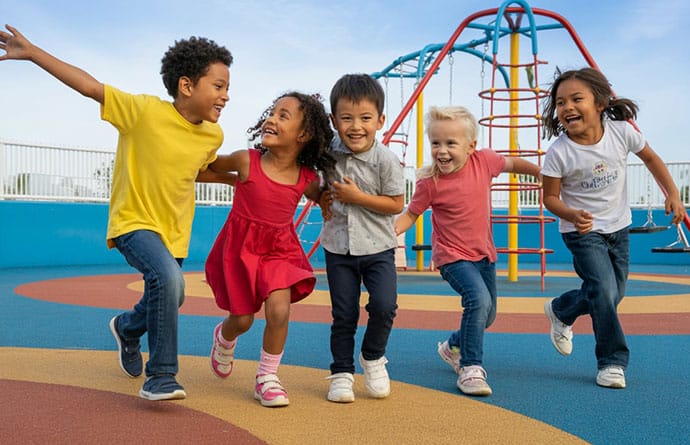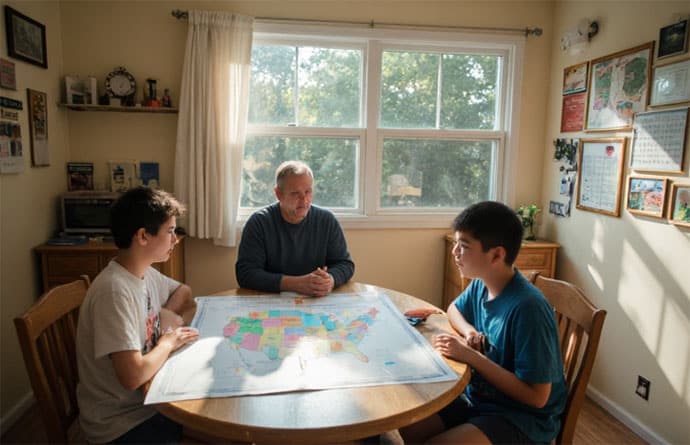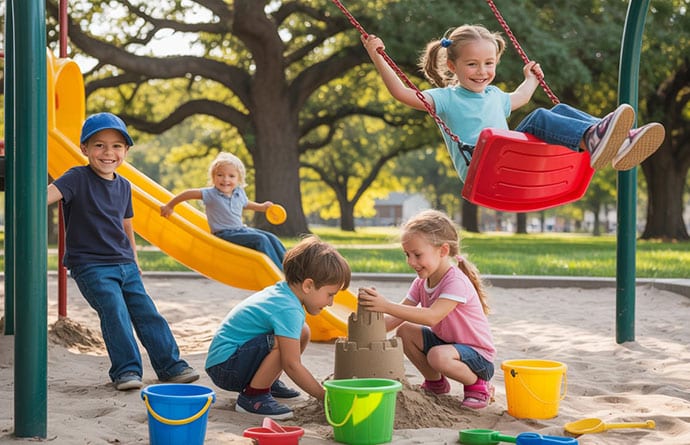
Moving evokes so many emotions: from sadness, fear, and uncertainty, to excitement, anticipation, and hope.
When you move with children, those emotions intensify. One moment, your child might be bouncing around, exclaiming, “Are we moving today?” and packing up toys with urgency, the next moment, they might resist, cling, or express sadness or worry about leaving familiar places behind.
They’re being removed from their comfort zones into new routines, new people, new surroundings, and a new social world. That upheaval affects them socially, academically, emotionally, and behaviorally.
Whatever your children’s reactions, moving will affect them, either positively or negatively.
So, how exactly does moving home affect children? And how can you, as a parent, steer the experience so it becomes a positive one?
You may also like to read: Moving Across Country with Children. In this comprehensive guide, we suggest ways to make moving home for your kids, no matter what their age.
How Moving Impacts Children’s Development and What the Studies Say

It is important to note that not every home move is damaging to children.
A single, well-planned move, particularly one that improves living conditions, may cause short-term stress but little long-term harm.
The risk rises when moves are frequent, involve multiple school changes, or come with instability in family life.
Despite most kids being surprisingly adaptable and resilient, let’s look at possible impacts that moving can have:
Social Growth & Challenges
- Making new friends & fitting in: A fresh community means fresh faces and a new social circle. Kids often worry: Will I find friends? Will anyone care about me? If the transition is rough, children may feel lonely, isolated, or hesitant to engage socially.
- Loss of existing relationships: If the move is far, regular contact with old friends may become impossible or rare. That loss removes a sense of stability.
- Broader social perspective: On the upside, meeting new people, encountering different beliefs, and navigating varied social norms can expand empathy, flexibility, and tolerance.
But there’s danger too: If children struggle to belong, don’t feel accepted, or withdraw socially, their self-esteem and emotional well-being can suffer.
What research says:
- Many studies conclude that switching schools is tied to more behavior problems, poorer peer relationships, and withdrawal. Children who move often are more likely to report feeling disconnected socially.
- Additionally, home moves often lead to anxiety or depression and poor conduct, and aggression in adolescence.
The link seems stronger when moves are frequent, disruptive, or occur during early adolescence.
You may also like to read: How to Make Friends After Moving Home. In this guide, we suggest 20 different ways to make friends in a new area after moving home.
Academic / Educational Effects
- Curriculum Misalignment: Different schools use different curricula, standards, textbooks, teaching styles, and pacing. A child coming from elsewhere may face gaps, duplications, or misalignment.
- Lost instruction time: Moves midyear or during term can mean lost days, weeks, or more of lesson time, with more pressure to catch up.
- Needing to re-establish reputation & relationships: In a new school, children may feel pressure to “prove” themselves again to teachers, coaches, clubs, or peers. That alone adds stress.
- Motivation, belonging, and school engagement: If children feel disconnected, they may become less motivated, skip assignments, or disengage.
What research says:
- Frequent changes of school are associated with lower test scores, higher rates of grade retention, and reduced likelihood of high school completion.
- One study using administrative records found that each school change is associated with a GPA drop of about 0.02 in the year of the move (controlling for prior performance).
- Another recent study shows that switching schools correlates with poorer academic outcomes (especially in reading/math) even after adjusting for background factors.
- Timing matters: moves during the school year or late in high school appear particularly risky for dropout and disengagement.
You may also like to read: Tips for Moving During the School Year. In this guide, we offer some tips on how to make transitioning to a new school during term time easier.
Emotional & Mental Health
- Stress, anxiety, and uncertainty: Moving triggers change: new routines, new surroundings, unknowns. For many children, that stress manifests as worry, irritability, or mood shifts.
- Attachment and sense of stability: Children need the security of predictability, consistency, and familiar relationships. Disrupting that can affect their emotional foundation.
- Cumulative risk: Repeated moves, especially during vulnerable developmental periods or in the presence of other stressors (financial instability, parental mental health issues), increase long-term risk of mental health challenges.
What research says:
- A 2024 Danish register-based study found that greater residential movement during childhood (from birth to age 15) was associated with a higher likelihood of receiving a depression diagnosis in adulthood, even after adjusting for neighborhood poverty exposure.
- A 2024 study detected associations between adolescent residential mobility and both internalizing and externalizing problems over time.
- Meta-analyses link residential mobility to adverse health outcomes, including psychological stress, in childhood and adolescence.
- Another study showed that moving relates to changes in mental health symptoms with increases in distress when moves are upward or downward rather than lateral.
- Additionally, family context matters: more residential mobility is strongly linked to higher caregiver depression and family stress, which in turn can affect child well-being.
You may also like to read: Dido the Dragon Moves Home. If you have young children, they will love this story about a young dragon and his family moving home. It will help your child understand the changes that are going to happen, the emotions they will experience, and how to adapt to a new life. It also includes useful tips for parents who are moving with kids as well.
Personal Growth, Identity, Confidence & Behavior
The flipside to the risks of moving is balanced with opportunity. A child who successfully adapts may:
- Gain resilience, flexibility, and problem-solving skills
- Develop greater self-reliance and confidence when faced with new challenges
- Explore new interests and environments they might not have had access to before
- Experience a “fresh start”: fewer fixed expectations, a chance to reinvent identity, and shed previous social labels or reputation
Behaviorally, you might see:
- Short-term increases in irritability, moodiness, regression, or more clinginess
- Or greater curiosity, initiative, or boldness
It’s natural for reactions to vary widely by age, temperament, and the context of the move.
You may also like to read: How to Change Schools When Moving Home. In this guide, we suggest things to take into consideration when choosing a new school for your kids.









moving frequently as a child is a recipe for cptsd. I’m 56 and still recovering from having no wider family, no community, adhd, social phobia, eating disorders, bpd etc.